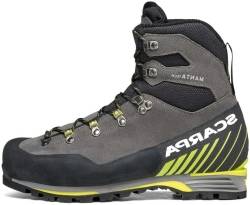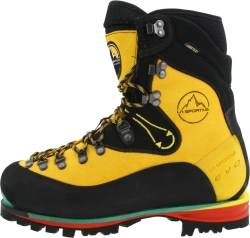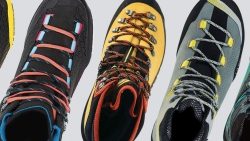4 zapatillas de running mujer talla 20 azules baratas menos de 60 in 2023
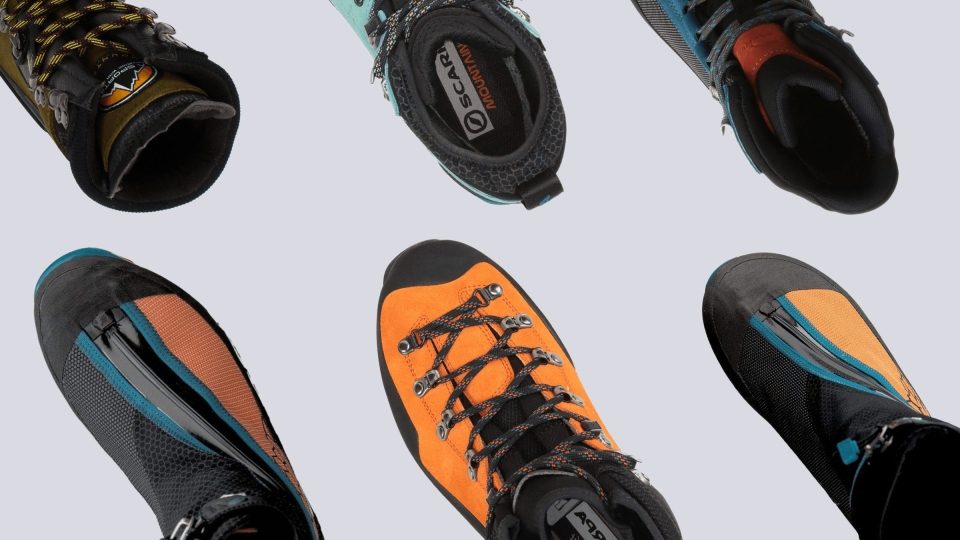
Are you feeling anxious and unsure about which pair of mountaineering boots to snag? Well, shake off that feeling and worry no more. Whether you need a boot that delivers a well-rounded performance or the best there is for the most treacherous of elevations, we curated this selection right here to help you choose the right pair.
We have tested 30+ mountaineering boots to come up with this comprehensive top-picks list. There is a lot to sink your teeth into here—from the most versatile mountaineering kick to the pair that can be your starting marrones budget-wise.
Best mountaineering boots overall

What makes it the best?
Pros
- Incredible ankle support
- Spacious forefoot
- The shoes was awesome I started wearing it already
- Quite cozy in the cold
- Long-lasting
- Waterproof
- Affordable than most
Cons
- Weighty
- Subpar ventilation
Today's best price
Best lightweight mountaineering boots

What makes it the best?
Pros
- Lightweight
- Beefy construction
- Stiff but not bulk
- Excellent grip on varied mountain terrain
Cons
- Sport Nanoflex TR V2 Women's Training Shoes
- Narrow toe box
Today's best price
Best winter mountaineering boots
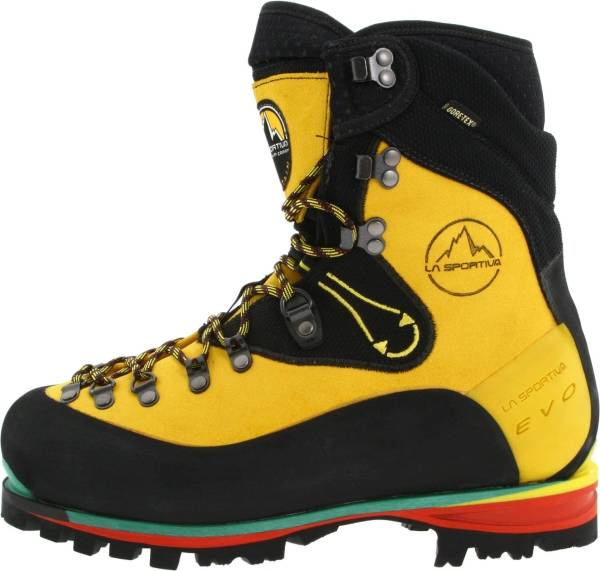
What makes it the best?
Pros
- Warm
- Durable
- Supportive sole
Cons
- Inadequate stock insole support
- Limits ankle mobility
- Lacks ground sensitivity
Today's best price

Mountaineering boots with the best durability
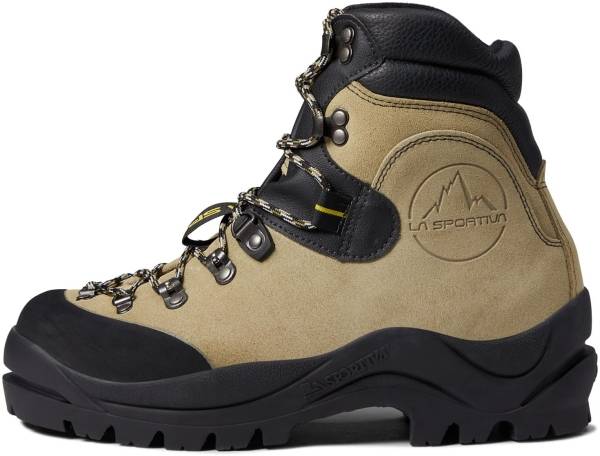
What makes it the best?
Pros
- Superbly durable
- Comfortable build
- Old-school good looks
- Outstanding climbing performance
- Stable on rough terrain
- Womens P448 Skate Boster Shoes
- Ingenious lacing system.
- Reliable water repellency
Cons
- Long break-in time
- Burdening weight
- Not for wide feet
Today's best price

Comparison of the 4 best mountaineering boots
+ + Add a product | + + Add a product | + + Add a product | + + Add a product | + + Add a product | |
|---|---|---|---|---|---|
| Best | |||||
| CoreScore | |||||
| Users rating | |||||
| Experts | |||||
| Best price | |||||
| Ranking | |||||
| Popularity | |||||
| # of colorways |
How to choose mountaineering boots
There’s something built into the human spirit that makes us want to explore and push ourselves to the limit, it’s a natural urge that some mountaineers satisfy by planning ascents up some of the world’s toughest and most infamous mountains.
In such extreme conditions, it's imperative that your gear does not fail you, you’ll need a very specific tool for this very specific job. Here’s our guide to help you find the best mountaineering boots for you.
What is mountaineering?
Mountaineering is the sport of climbing to the peak of large mountains. People travel to some of the world’s most famous mountains like the Matterhorn in Switzerland, Denali in Alaska, and of course the formidable Mt. Everest.
The sport is not for the faint of heart or for people just getting started in the outdoors. Mountaineering is for experienced hikers who not only have the right level of fitness to climb enormous mountains but who are also able to navigate technical trails, understand route maps and be adaptable and prepared enough to deal with extreme conditions.
What are mountaineering boots used for?
Think of mountaineering boots as specialist tools that allow people to push themselves to the limit on the most technical and demanding routes. There’s more than one type of mountaineering boot ranging from ones that help you tackle winter ascents to ones that let you stay out on technical routes all summer long.
The differences between mountaineering and hiking
Hiking becomes mountaineering when you start to need mountaineering-specific equipment. Hiking can take you on some very steep and technical terrain, but when you need to have crampons, ice picks, or even ropes to keep going, then you’re mountaineering.
Womens New Balance 990v5 Running | Mountaineering boots vs hiking boots
If you’re new to the sport, it might seem that there aren’t many differences between hiking boots and mountaineering boots, but on closer inspection, you’ll notice five main ways that they differ.
These are:
- Heavier weight
- Haus of Honey Les Terriers platform sandals Neutrals
- Crampons
- Tougher materials
- Stiffer midsoles
Heavier weight
To deal with the tougher conditions of mountaineering, the boots are designed to be more durable and rugged. There’s more protection of the sole and uppers, more insulation, deeper lugs, and reinforced construction all come with a weight penalty.
Hiking boots can also be quite heavy, but they don’t take as much abuse as mountaineering boots, so overall manufacturers can make these a lot lighter.
Haus of Honey Les Terriers platform sandals Neutrals
While hiking up steep mountains you need as much support as you can get, that’s why you’ll find mountaineering boots have a higher cuff than hiking boots. The job of the cuff is to provide ankle support so that if you trip or stumble, you’ll be less likely to injure yourself. The more extreme the trail, the more support you’ll need which is why hiking boots have lower cuffs than mountaineering boots.
Crampon compatibility is important
Going mountaineering and expecting to come across some snowy or icy conditions? Then you’ll want to make sure that your boots are compatible with crampons. Crampons are large spikes that attach to the outer of your boot and give grip in slippy conditions. The best mountaineering boots all have the ability to attach crampons, but not all hiking boots do.
Made with tough materials
Similar to how mountaineering boots are heavier because of the conditions, they’re expected to be used in, they’re also made with different materials to hiking boots. Regular hiking boots are either made with leather, synthetic materials like nylon, or sometimes a mix of both. Mountaineering boots need to be tougher though, after all, people buy them to climb the highest mountains in the world.
The midsoles are stiffer
The midsole also differs between hiking boots and mountaineering boots. Hikers need comfort and mobility while out on the trail, so they’re made with flexible midsoles. But mountaineers often carry more weight so their midsoles need to be stiff and provide support.
Can you go mountaineering in hiking boots?
Generally speaking, most people don’t go mountaineering in hiking boots, they use mountaineering-specific boots that can perform in all conditions. But having said that, if you have a very robust, durable, and crampon-compatible hiking boot, you can go mountaineering in them. Just make sure that they’re stiff enough to perform in technical situations and have enough insulation to keep you warm in the alpine.
Womens New Balance 990v5 Running | What are the types of mountaineering boots?
As mountaineering boots can be used in a range of conditions from high altitude summit attempts to lower level technical routes, there’s also a variation in the boots themselves. That’s why there are three main types of mountaineering boots.
These are:
- 1 Low Soft Ground Boots
- Four-season mountaineering boots
- Lightweight mountaineering boots
1 Low Soft Ground Boots
1 Low Soft Ground Boots, sometimes called B3 boots, are at the far end of the boot spectrum. They’re the type of boots that help people climb Kilimanjaro, K2, and the other epic peaks in the world. To do this, they need to have some very specific features.
Lots of insulation
High altitudes mean low temperatures. At these heights, you’ll likely be in sub-zero conditions for the majority of your time so you need a very well-insulated boot and you can choose between double or triple-insulated boots.
Double-insulated boots combine an insulated mountaineering boot with an additional, internal, insulated liner. This liner slips inside the boot and acts as an additional layer against the cold. Triple-insulated boots add another layer to the outside of the boot. Acting like a gaiter, this external layer of insulation and protection that zips up around the boot.
Choose a lacing system that suits you
There are two lacing systems to consider - the traditional type with laces or a BOA system. Both have their benefits and drawbacks, so it’s worthwhile researching both and making a decision that best suits your needs.
- Traditional lacing system: Traditional laces are popular for a reason, they’re reliable and when they do break, they’re easily repaired or replaced. The downside is that they can be slightly difficult to operate in freezing conditions with thick gloves on.
- BOA lacing system: BOA systems are easier to work with while wearing gloves as you can finely tune your tightness by turning the dial. However, if your BOA system breaks while you’re climbing a remote mountain, they’re much harder to repair.
Suitable to use with crampons
If you want to reach the top of the highest mountains, you’ll need a pair of crampons and boots that can accommodate them. 1 Low Soft Ground Boots are compatible with C2 and C3-type crampons. C2s, also known as semi-step, need a boot with a stiff sole and heel groove to attach, letting you climb during the winter and in snowy conditions. C3s are only compatible with high-altitude boots and offer penetration into hard ice.
Four-season mountaineering boots
Think of four-season boots, also known as B2 boots, as your do-it-all, go-anywhere boots. Take them climbing in winter through snowy landscapes or off-route on summer scrambles across technical terrain.
Durable for use in all conditions
The best four-season mountaineering boots need to be durable so that they can put up with tough conditions throughout the year and still be able to perform and keep you safe as you scale mountain peaks. Look for boots with protection strategically placed on the toes and heels, and try to find ones with robust, metal lace hooks. Unfortunately, these all come at a weight penalty, but in my experience are well worth it.
Can take some crampons
Similar to the B3 mountaineering boots described above, four-season mountaineering boots need to be crampon-compatible too, but for different categories of crampons. Both can accommodate C2 crampons as they have stiff soles, but B2 mountaineering boots can also accommodate C1 crampons that are more flexible than the others, giving you a more subtle level of support in conditions that aren’t so severe.
Insulation for lower temperatures
Four-season mountaineering boots come with a good level of insulation that allows you to get out on the trail on even the coldest of winter days. The uppers of B3 boots are the first line of defense against the cold, as strong, rugged uppers help block out the elements, while both natural and synthetic materials are used in the liner to keep your feet as warm as possible.
Rigid midsoles for stability
Tough conditions need a tough boot and at the core of a tough boot is a rigid midsole with very little to no movement at all. This acts as a strong base that your boot is built around that provides stability and support on loose terrain. A rigid midsole also lets you use crampons to their full potential, creating a solid platform with every foot placement.
Lightweight mountaineering boots
If high-altitude boots are at one end of the mountaineering boot spectrum, then lightweight boots are at the other end. These boots are like a hiking boot’s big brother, with some additional features and design choices that allow you to push yourself a bit further to summit mountains.
Keeping the weight down
The name is a bit of a giveaway, but the main draw of these boots is the weight. They’re trimmed-down versions of the best mountaineering boots, leaving only the essential features that you need for mountaineering. Except to find some weighing around the 600g mark per boot - featherweights compared to B2 boots.
Less insulation for warmer days
Insulation is where the best lightweight mountaineering boots save a lot of weight. These boots are designed to be worn in four seasons so they have to consider that people will wear these all summer long and not need high amounts of insulation. Those who do wear them in winter can wear thicker socks to help keep the cold at bay.
Not suitable for all crampons
Lightweight boots are not meant for winter ascents of the highest peaks in the Alps, instead, they’re made for people who get out on long technical hikes in the summer and some technical winter trails with crampons. That’s why they’re best suited to C1 or B1 crampons, as they have a high level of flexibility and shorter spikes.
Flexible midsoles for comfort
The other mountaineering boots in this article have rigid midsoles, lightweight boots have stiff midsoles. They still give a good level of support, but they have some movement and flexibility, providing more comfort on the trails, particularly during the summer.
Mountaineering boots FAQ
Can you use mountaineering boots for hiking?
You can absolutely use mountaineering boots for hiking, but you have to make sure that you get the right pair of boots. A pair of stiff, heavy high-altitude mountaineering boots will be a nightmare on a regular hiking trail. They’re so much overkill that it’s unlikely that you’ll enjoy yourself.
If you plan to go hiking in your mountaineering boots, then look into getting a pair of lightweight mountaineering boots. These boots are more flexible, much lighter, and overall better suited to use on hiking trails.
Do mountaineering boots have shanks?
Mountaineering boots do have shanks, the length depends on the type of boot you get. B2 mountaineering boots need as much support as possible, so their shanks can run the entire length of the boot. Whereas B3 and lightweight mountaineering boots have shorter shanks or sometimes even no shanks.
Are there mountaineering boots for wide feet
If you’ve wide feet then you’ll be happy to hear that there are mountaineering boots for you. Not only are there wide-specific mountaineering boots on the market, but there are also plenty of boots out there with a wider toe box as well.
Do mountaineering boots have steel toes?
Don’t get a pair of mountaineering boots, or even hiking boots, with a steel toe, it’s a feature that you’ll have no use for out on the trail and will only suffer the weight penalty. Steel toe boots are common in work boots where you need protection from things falling on you, a situation that you’re unlikely to find out on the trail.
How should mountaineering boots fit?
Mountaineering boots are used in conditions where hiking boots don’t provide enough and sometimes even in conditions where you might be more used to wearing a ski boot. But even with these extreme conditions, mountaineering boots should fit more like your hiking boots.
Pressure is good. Tightness is not
You’ll be spending long, tough days in these boots, so it’s no surprise that the best mountaineering boots fit comfortably right away. They should flex as your foot moves, have no major pressure marroness, and fit snugly everywhere, but not feel tight.
Adjustability for a better fit
Premium mountaineering boots are extremely advanced, using the latest materials and technologies. This allows some level of adjustability, letting you achieve the same fit with a thin sock in warmer conditions and a thicker sock in colder temperatures.
How we test mountaineering boots
Core to the Stefoy-les-lyonShops experience is helping mountaineers of all skill levels find the best footgear for their next ascent. To meet that goal, we test and review boots ourselves. Here is our approach:
- Mens 6.5us rounding nike air max plus iii 3 tn cd7005-003 rare black shoes womens 8us.
- As professional testers, we go through mountain-climbing hoops to identify each pair’s strengths and forte.
- We do not stop without having hard proof and explanations for what we experienced during our wear testing. We go extra by measuring the 30+ parameters of the shoes inside our lab. We also dissect the shoes and chop them up.
For mountaineering boots, we prioritize thick and durable outsole lugs. With that, we measure the thickness, hardness, and even durability of the outsole by using our caliper, durometer, and Dremel, respectively.

